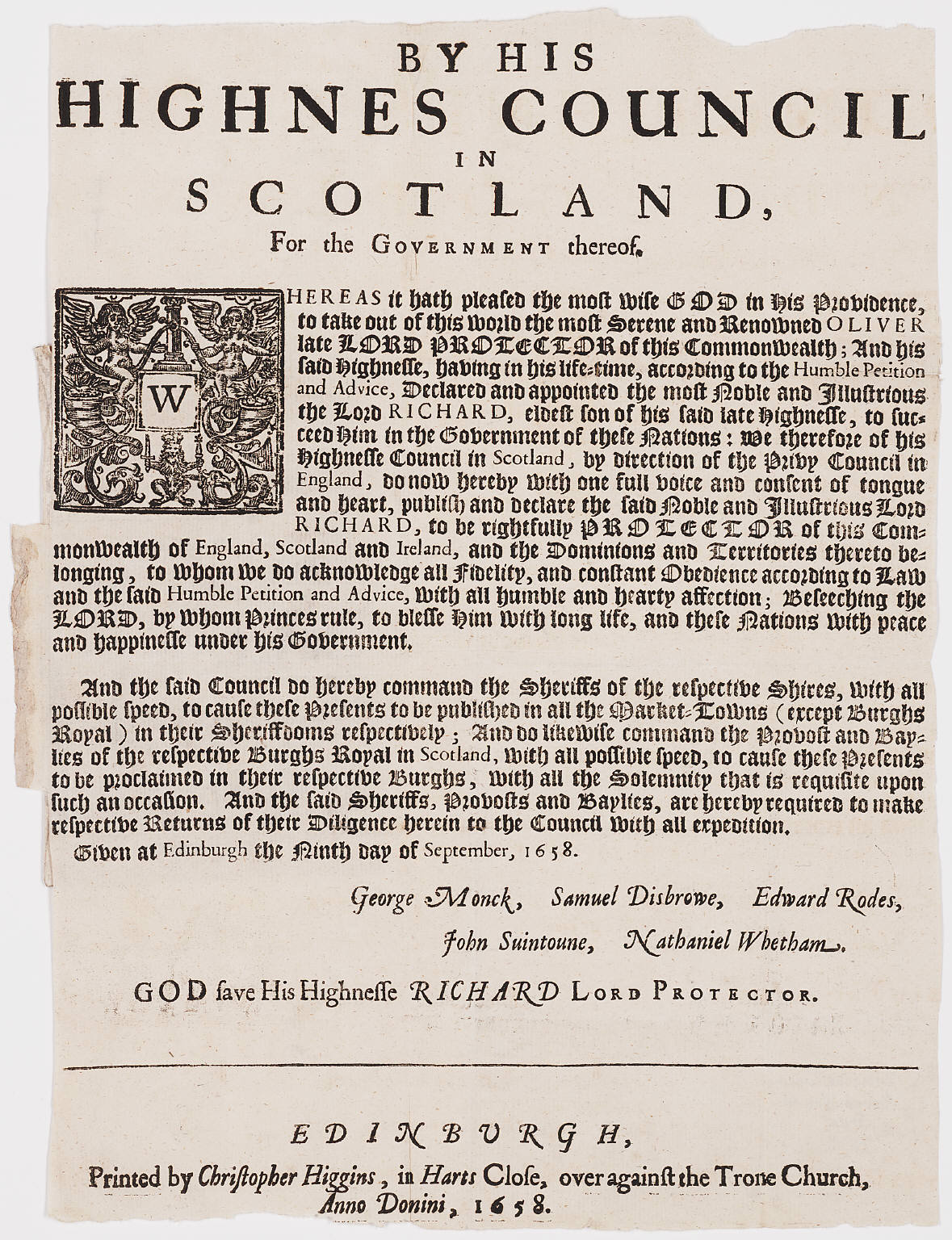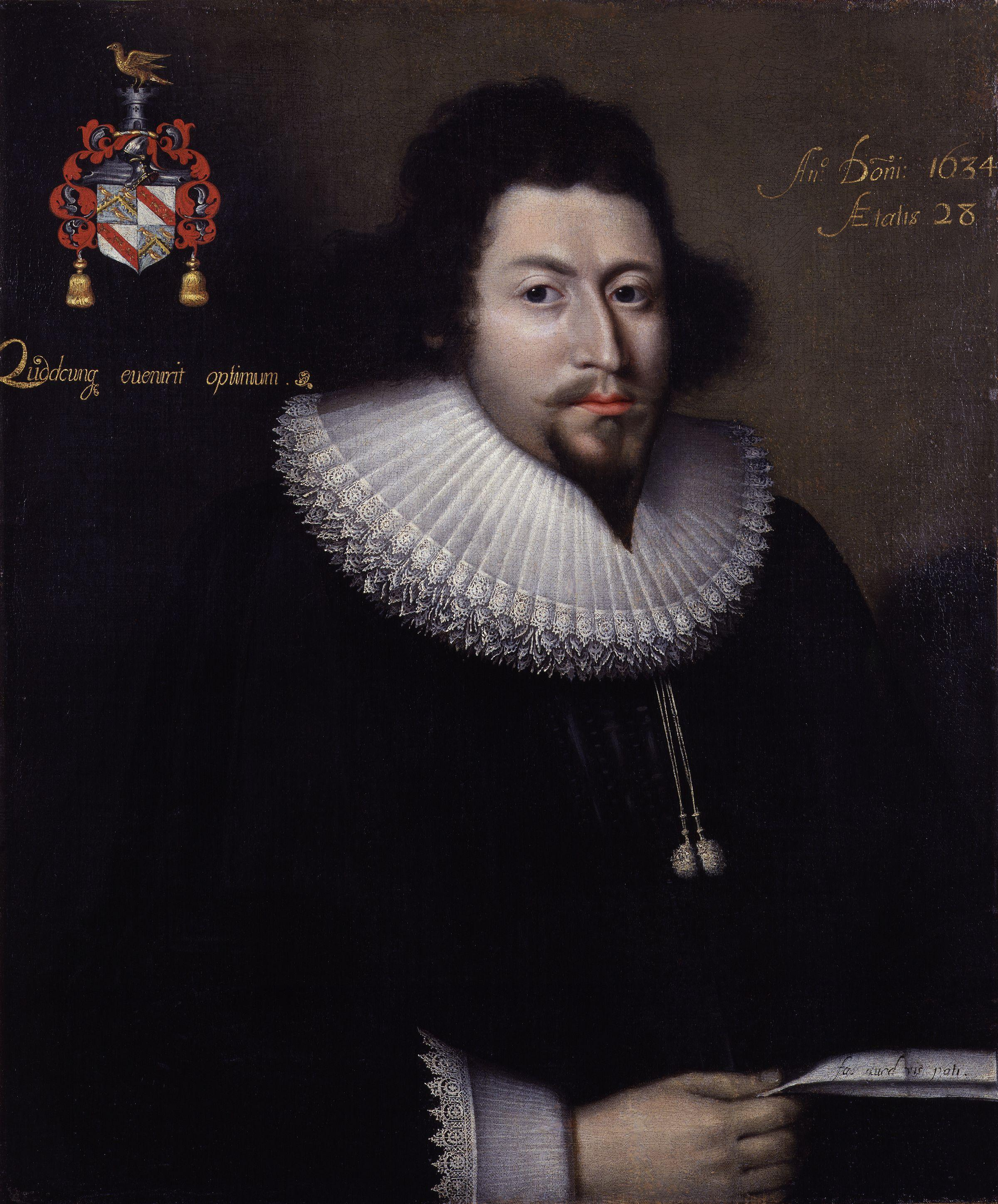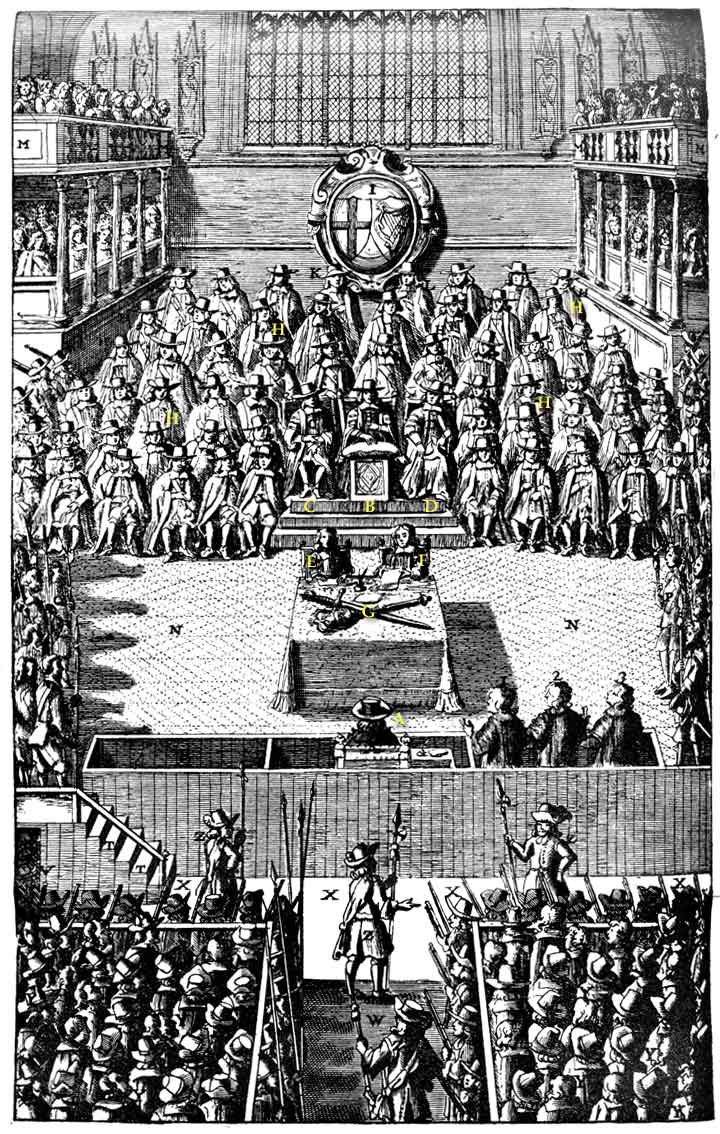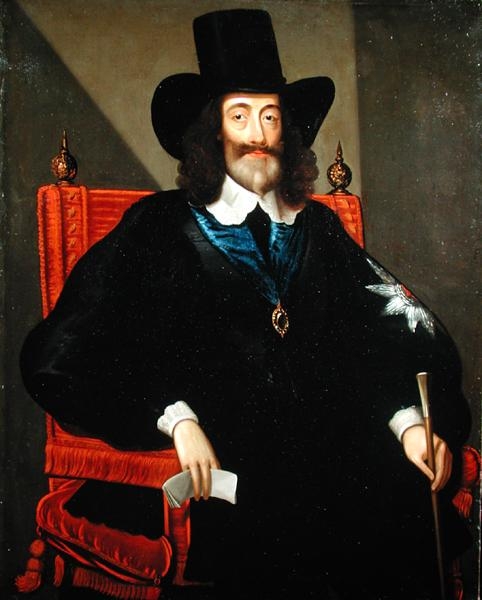|
Edmund Dunch, Baron Burnell Of East Wittenham
Edmund Dunch, 1st Baron Burnell of East Wittenham (1602–1678) was an English Member of Parliament who supported the Parliamentary cause before and during the English Civil War. During the Interregnum he sat as a member of parliament. In 1659, after the Protectorate and before the Restoration, regaining his seat in the Rump he also sat in Committee of Safety. After the restoration of the monarchy he was not exempted under the Act of Pardon and Oblivion but the titles granted to him under the Protectorate were not recognised under the restored monarchy of Charles II. Biography Edmund Dunch was elected Member of Parliament (MP) for Berkshire in 1624 and was re-elected in 1625 and 1626. In 1628 he was elected MP for Wallingford (then Berkshire (now Oxfordshire)). and Sheriff of Berkshire in 1633–1634. A Royal warrant was issued for his arrest in 1639 for failure to pay ship money in support of King Charles I. John Hampden represented him at his trial, and he escaped punishme ... [...More Info...] [...Related Items...] OR: [Wikipedia] [Google] [Baidu] |
English Civil War
The English Civil War (1642–1651) was a series of civil wars and political machinations between Parliamentarians (" Roundheads") and Royalists led by Charles I ("Cavaliers"), mainly over the manner of England's governance and issues of religious freedom. It was part of the wider Wars of the Three Kingdoms. The first (1642–1646) and second (1648–1649) wars pitted the supporters of King Charles I against the supporters of the Long Parliament, while the third (1649–1651) saw fighting between supporters of King Charles II and supporters of the Rump Parliament. The wars also involved the Scottish Covenanters and Irish Confederates. The war ended with Parliamentarian victory at the Battle of Worcester on 3 September 1651. Unlike other civil wars in England, which were mainly fought over who should rule, these conflicts were also concerned with how the three Kingdoms of England, Scotland and Ireland should be governed. The outcome was threefold: the trial of and ... [...More Info...] [...Related Items...] OR: [Wikipedia] [Google] [Baidu] |
Little Wittenham
Little Wittenham is a village and Civil parishes in England, civil parish on the south bank of the River Thames, northeast of Didcot in South Oxfordshire. In Local Government Act 1972, 1974 it was transferred from Berkshire to the county of Oxfordshire and from Wallingford Rural District to the district of South Oxfordshire. Parish church The Church of England parish church of Saint Peter has a 14th-century west bell tower, of which the lower stages are English Gothic architecture#Decorated Gothic, Decorated Gothic and the upper stages are English Gothic architecture#Perpendicular Gothic, Perpendicular Gothic. In 1863 the nave and chancel in the English Gothic architecture#Early English Gothic, Early English Gothic were rebuilt to designs by the Gothic Revival architecture, Gothic Revival architect Charles Buckeridge. The church was designated as Grade II* listed in 1963. St. Peter's has a number of English church monuments, monuments to members of the Dunche family who lived in ... [...More Info...] [...Related Items...] OR: [Wikipedia] [Google] [Baidu] |
Lord Protector
Lord Protector (plural: ''Lords Protector'') was a title that has been used in British constitutional law for the head of state. It was also a particular title for the British heads of state in respect to the established church. It was sometimes used to refer to holders of other temporary posts; for example, a regent acting for the absent monarch. Feudal royal regent The title of "The Lord Protector" was originally used by royal princes or other nobles exercising a role as protector and defensor of the realm, while sitting also in a council of government, usually when the English monarch was still a minor or otherwise unable to rule. It differs from a continental regency because of the separation of powers. Notable cases in England: * John, Duke of Bedford, and Humphrey, Duke of Gloucester, were (5 December 1422 – 6 November 1429) jointly Lords Protector for Henry VI (1421–1471); * Richard Plantagenet, Duke of York, was thrice (3 April 1454 – February 1455; 19 November ... [...More Info...] [...Related Items...] OR: [Wikipedia] [Google] [Baidu] |
Richard Cromwell
Richard Cromwell (4 October 162612 July 1712) was an English statesman who was the second and last Lord Protector of the Commonwealth of England, Scotland and Ireland and son of the first Lord Protector, Oliver Cromwell. On his father's death in 1658 Richard became Lord Protector, but lacked authority. He tried to mediate between the army and civil society and allowed a Parliament containing many disaffected Presbyterians and Cavalier, Royalists to sit. Suspicions that civilian councillors were intent on supplanting the army were brought to a head by an attempt to prosecute a major-general for actions against a Royalist. The army made a threatening show of force against Richard and may have had him in detention. He formally renounced power nine months after succeeding. Although a Royalist revolt was crushed by the recalled civil war figure General John Lambert (general), John Lambert, who then prevented the Rump Parliament from reconvening and created a Committee of Safety, Lam ... [...More Info...] [...Related Items...] OR: [Wikipedia] [Google] [Baidu] |
Bulstrode Whitelocke
Sir Bulstrode Whitelocke (6 August 1605 – 28 July 1675) was an English lawyer, writer, parliamentarian and Lord Keeper of the Great Seal of England. Early life He was the eldest son of Sir James Whitelocke and Elizabeth Bulstrode, and was born on 6 August 1605 at George Croke's house in Fleet Street, London. He was baptized on 19 August 1605 at the nearby church of St Dunstan-in-the-West, where his mother's parents were married in 1571; his notorious uncle Edmund Whitelocke, being one of the godfathers, announced that the child was to be called Bulstrode. The vicar demurred, but Edmund insisted that he bear his mother's name, "Bulstrode or Elizabeth, let them choose which they please". Bulstrode was educated briefly at Eton College, then at Merchant Taylors' School and at St John's College, Oxford, where he matriculated on 8 December 1620. Early career He left Oxford, without a degree, for the Middle Temple, and was called to the bar in 1626; in 1628 he became treasure ... [...More Info...] [...Related Items...] OR: [Wikipedia] [Google] [Baidu] |
Cromwell's Other House
The Other House (also referred to as the Upper House, House of Peers and House of Lords), established by the Lord Protector Oliver Cromwell under the terms of the Humble Petition and Advice, was one of the two chambers of the parliaments that legislated for England and Wales, Scotland, and Ireland, in 1658 and 1659, the final years of the Protectorate.The Humble Partition states "to create the 'Other House,' the members to be such as should be nominated by his highness and approved by the commons". George Craik notes "The commonwealth-men, it appears, would tolerate neither the designation 'House of Lords.' nor that of 'Upper House.' The thing was, therefore, termed 'the Other House;' that branch of the legislature losing not less in real power than it lost in name or dignity: they were not to exceed seventy in number, nor to be less than forty, whereof one-and-twenty were to form a quorum; they were not to give any vote by proxy; on death or removal no new members were to be admitt ... [...More Info...] [...Related Items...] OR: [Wikipedia] [Google] [Baidu] |
Second Protectorate Parliament
The Second Protectorate Parliament in England sat for two sessions from 17 September 1656 until 4 February 1658, with Thomas Widdrington as the Speaker of the House of Commons. In its first session, the House of Commons was its only chamber; in the second session an Other House with a power of veto over the decisions of the Commons was added. Background There were two sessions the first from 17 September 1656 until 26 June 1657 and a second from 20 January until 4 February 1658. The Second Protectorate Parliament was summoned reluctantly by the Lord Protector Oliver Cromwell on the advice of the Major-Generals who were running the country as regions under military governors. The Major-Generals thought that a compliant parliament would be the best way to raise money to pay for the Army occupation, and the Navy both of which were involved in the Anglo-Spanish War (1654–1660). The elections were held under the new written constitution called Instrument of Government. It in ... [...More Info...] [...Related Items...] OR: [Wikipedia] [Google] [Baidu] |
First Protectorate Parliament
The First Protectorate Parliament was summoned by the Lord Protector Oliver Cromwell under the terms of the Instrument of Government. It sat for one term from 3 September 1654 until 22 January 1655 with William Lenthall as the Speaker of the House. During the first nine months of the Protectorate, Cromwell with the aid of the Council of State, drew up a list of 84 bills to present to Parliament for ratification. But the members of Parliament had their own and their constituents' interests to promote and in the end not enough of them would agree to work with Cromwell, or to sign a declaration of their acceptance of the ''Instrument of Government'', to make the constitutional arrangements in the ''Instrument of Government'' work. Cromwell dissolved the Parliament as soon as it was allowed under the terms of the ''Instrument of Government'', having failed to get any of the 84 bills passed. Parliamentary constituencies The ''Instrument of Government'' specified the numbers of memb ... [...More Info...] [...Related Items...] OR: [Wikipedia] [Google] [Baidu] |
Rump Parliament
The Rump Parliament was the English Parliament after Colonel Thomas Pride commanded soldiers to purge the Long Parliament, on 6 December 1648, of those members hostile to the Grandees' intention to try King Charles I for high treason. "Rump" normally means the hind end or back-side of a mammal; its use meaning "remnant" was first recorded in the above context in English in 1649. Treaty of Newport In September 1648, at the end of the Second English Civil War, the Long Parliament was concerned with the increasing radicalism in the New Model Army. The Long Parliament began negotiations with King Charles I. The members wanted to restore the king to power, but wanted to limit the authority he had. Charles I conceded militia power, among other things, but he later admitted that it was only so he could escape. In November the negotiations began to fail, and the New Model Army seized power. Charles I was then taken into the Army's custody to await trial for treason. Pride's Purge The ... [...More Info...] [...Related Items...] OR: [Wikipedia] [Google] [Baidu] |
High Court Of Justice For The Trial Of Charles I
The High Court of Justice was the court established by the Rump Parliament to try Charles I, King of England, Scotland and Ireland. Even though this was an ''ad hoc'' tribunal that was specifically created for the purpose of trying the king, its name was eventually used by the government as a designation for subsequent courts. Background The English Civil War had been raging for nearly an entire decade. After the First English Civil War, the parliamentarians accepted the premise that the King, although wrong, had been able to justify his fight, and that he would still be entitled to limited powers as King under a new constitutional settlement. By provoking the Second English Civil War even while defeated and in captivity, Charles was held responsible for unjustifiable bloodshed. The secret "Engagement" treaty with the Scots was considered particularly unpardonable; "a more prodigious treason", said Oliver Cromwell, "than any that had been perfected before; because the former qu ... [...More Info...] [...Related Items...] OR: [Wikipedia] [Google] [Baidu] |
Pride's Purge
Pride's Purge is the name commonly given to an event that took place on 6 December 1648, when soldiers prevented members of Parliament considered hostile to the New Model Army from entering the House of Commons of England. Despite defeat in the First English Civil War, Charles I retained significant political power. This allowed him to create an alliance with Scots Covenanters and Parliamentarian moderates to restore him to the English throne. The result was the 1648 Second English Civil War, in which he was defeated once again. Convinced only his removal could end the conflict, senior commanders of the New Model Army took control of London on 5 December. The next day, soldiers commanded by Colonel Thomas Pride forcibly excluded from the Long Parliament those MPs viewed as their opponents, and arrested 45. The purge cleared the way for the execution of Charles in January 1649, and establishment of the Protectorate in 1653; it is considered the only recorded military ''coup d'� ... [...More Info...] [...Related Items...] OR: [Wikipedia] [Google] [Baidu] |
Committee For Compounding With Delinquents
In 1643, near the start of the English Civil War, Parliament set up two committees the Sequestration Committee which confiscated the estates of the Royalists who fought against Parliament, and the Committee for Compounding with Delinquents which allowed Royalists whose estates had been sequestrated, to compound for their estates – pay a fine and recover their estates – if they pledged not to take up arms against Parliament again. The size of the fine they had to pay depended on the worth of the estate and how great their support for the Royalist cause had been. To administer the process of sequestration, a sequestration committee was established in each county. If a local committee sequestrated an estate they usually let it to a tenant and the income was used "to the best advantage of the State". If a "delinquent" wished to recover his estate he had to apply to the Committee for Compounding with Delinquents based in London, as the national Sequestration Committee was absorbed ... [...More Info...] [...Related Items...] OR: [Wikipedia] [Google] [Baidu] |





